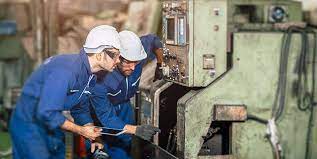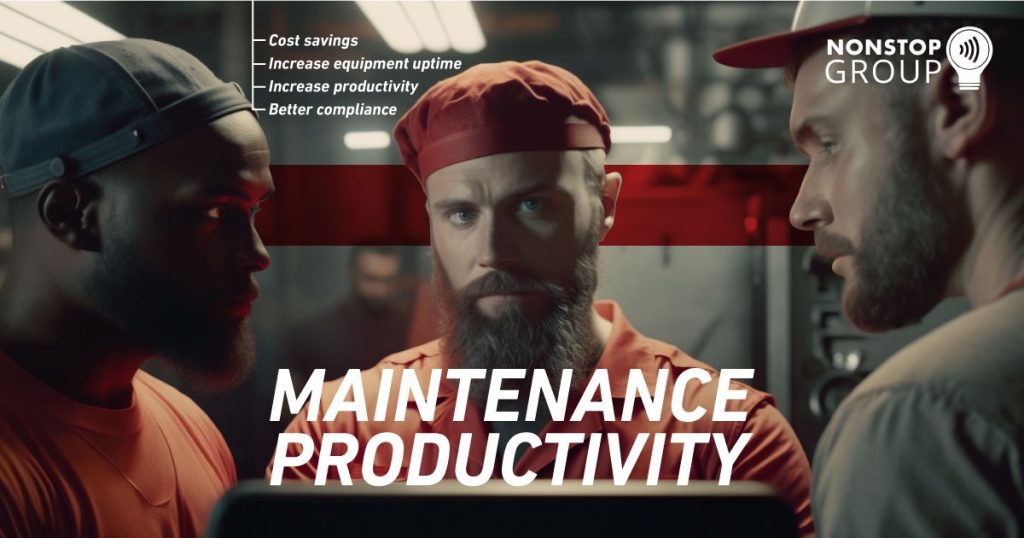6 Min Read
Businesses regularly undertake a number of maintenance activities to ensure that equipment, machinery, and other assets of the company are operating optimally. Depending upon the nature of maintenance, maintenance work can be categorized as planned maintenance and unplanned maintenance.
Planned maintenance schedules involve activities relating to preventive maintenance, vis-a-vis performing routine inspections, servicing, or replacing damaged parts of the assets. The goal of planned maintenance is to reduce downtime and maximize the life of assets and equipment. Unplanned maintenance refers to maintenance work that arises as a result of asset failure or malfunction.
It is crucial for organizations to ensure optimal maintenance productivity while carrying out maintenance activities. Maintenance productivity ensures cost-effectiveness, improved reliability, safety, compliance, and enhanced consistency of business operations.
What is Maintenance Productivity?
Maintenance productivity is the efficiency and effectiveness of all maintenance activities within a facility. Businesses achieve maintenance productivity when the equipment, machinery, and other assets of the facility are operating at optimal levels of performance. It ensures minimal downtime, reduced costs, and maximized output of resources.

Higher maintenance productivity is directly related to higher benefits. When technicians of the maintenance department identify emerging problems in the facility in advance, the effectiveness of maintenance work increases. As a result, a range of benefits is unlocked, including increased equipment reliability, reduced maintenance costs, improved safety, and increased production output. Effective maintenance practices can also extend the useful life of the equipment and reduce the need for costly repairs and replacements.
Smarter Asset Tracking With NFC Tags
Learn more about how NonStop Suite's NFC Asset Tracking Solution can help your Enterprise streamline operations to new heights.
Get A Free Product Tour
How to Measure Maintenance Productivity?
It is crucial to measure maintenance productivity for several reasons. Accurate productivity insights help maintenance teams control costs, identify maintenance activities that do not generate value, and prioritize maintenance activities for assets that operate at maximum capacity.
Measuring maintenance productivity helps maintenance teams identify areas of improvement in their maintenance system, which can contribute to reducing the risk of equipment failure, accidents at the workplace, quality defects, and downtime.
Additionally, the information can be used to increase the efficiency of facility services and increase the reliability and compliance of assets and machinery.
A maintenance team can implement the following practices to effectively measure maintenance productivity in a facility:
Defining Key Performance Indicators (KPIs) for Maintenance Productivity
Key Performance Indicators are quantifiable metrics that can help measure the success or progress toward specific goals. KPIs provide a way to track their performance over time and identify areas for improvement.
KPIs such as wrench time can help maintenance teams assess maintenance productivity by performing time studies on maintenance technicians. It helps the management understand a typical range of time spent on tools as well as other activities.

Other KPIs include Mean Time Between Failures (MTBF), Mean Time to Repair (MTTR), and Overall Equipment Effectiveness (OEE). Depending on the goals & objectives of a company, as well as the processes & equipment of the maintenance team, specific KPIs can be leveraged to measure maintenance productivity.
Using Metrics to Track and Monitor Maintenance Performance Over Time
Using metrics to track and monitor maintenance performance over time can help maintenance teams stay on track, identify focus areas, streamline processes, and make data-driven decisions that optimize their resources and improve the overall performance of their service.
For example, companies can use Maintenance Productivity Factor (MPF) metric to measure maintenance productivity. MPF combines efficiency in execution, the impact of organizational effectiveness, and the quality of maintenance work to measure productivity.
Analyzing Data to Identify Areas for Improvement and Make Informed Decisions
Company technicians collecting relevant data, including maintenance requests, work orders, asset history, records of materials used, and other details relating to the production and services of the facility, can extract valuable insights into maintenance productivity.
On analyzing essential company data, maintenance managers and technicians can determine the root causes that are contributing to poor productivity in the production process and, accordingly, prioritize improvements based on their impact and feasibility.
Factors Affecting Maintenance Productivity
Equipment Age and Condition
One of the most crucial factors that affect the productivity of maintenance tasks is the age and condition of assets and materials. Newer assets, equipment, or materials tend to have higher productivity compared to older and outdated machinery.
A lack of up-to-date machinery and assets can hamper the productivity of the facility and increases the risk of sudden equipment failure.
Availability of Spare Parts
The availability of spare parts, especially failure-prone parts is essential for maintaining equipment uptime and reducing downtime. Lack of availability of critical spare parts can delay repairs and increase maintenance costs.
On the other hand, if spare tools & equipment are easily available, the time and cost spent to maintain and fix assets can decrease.
Maintenance Staff Skills and Training
The skill and training of maintenance personnel and employees can have a significant impact on the productivity standards of maintenance work.
Highly skilled and trained personnel that are better equipped to diagnose and repair equipment problems can save time by effectively identifying areas of problem and fixing them quickly.
This can improve the productivity of maintenance tasks and enhance the maintenance effectiveness of the facility.

Maintenance Scheduling and Planning
Effective maintenance planning and scheduling are essential for maximizing the efficiency and effectiveness of maintenance activities. Poor, irregular planning and scheduling can lead to downtime, longer repair times, and increased maintenance costs.
Effective, routine maintenance scheduling helps companies enhance seamless maintenance planning, execution of work orders, and the quality of maintenance tasks.
Communication and Collaboration Between Maintenance and Production Teams
Needless to say, maintenance and production teams are two strong pillars of a company that supports business operations in numerous ways. Both teams must work in a cohesive environment with clear communication channels fostering teamwork and enhancing the quality of the maintenance process.
Maintenance and production teams providing timely feedback, showing support, acknowledging contributions, and working in tandem with each other can help businesses improve productivity and achieve maintenance success.
How to Ensure Continuous Improvement in Maintenance Tasks?
Embrace Proactive and Preventative Maintenance
Embracing proactive and preventative maintenance can reduce asset downtime, increase equipment lifespan, and save money on repairs and replacements.
Proactive maintenance involves identifying potential issues before they occur and taking action to prevent them from happening. Preventative maintenance involves regularly scheduling maintenance tasks to prevent equipment failure or downtime.
Investing in Maintenance Technology and Tools
Technology has revolutionized all businesses and industries, and the maintenance industry is no exception. Investing in advanced technological tools and platforms, such as Computerized Maintenance Management Software (CMMS), can help a maintenance team seamlessly manage maintenance tasks and identify potential issues in the work processes.
CMMS Software provides a centralized platform for managing and tracking maintenance activities. Along with maintenance work, it helps businesses with advanced reporting insights into work order management, inventory management, asset management, and preventive maintenance scheduling.
Conducting Regular Training and Skills Development for Maintenance Staff
With evolving technology and processes, maintenance department employees require regular training and skills development to stay updated with the latest maintenance procedures and job roles.
Businesses can organize regular skills development approaches, including on-the-job training, classroom training, e-learning, and workshops to improve the efficiency and effectiveness of maintenance tasks, reduce downtime, and enhance the overall performance of the maintenance department.
Establishing Clear Communication Channels Between Maintenance & Production Teams
Lack of understanding and limited communication may restrict businesses from achieving their goals & objectives. In order to ensure continuous improvement in maintenance tasks, it is crucial for maintenance and production teams to work in tandem with each other. Coordination and cooperation between the two departments can ensure alignment of business priorities and expectations.

To enhance coordination and cooperation, company management can schedule regular meetings, assign clearer roles and responsibilities, and establish standardized procedures for employees of all departments. Removing any communication barriers between maintenance and production teams can ensure continuous improvement in maintenance tasks.
Prioritizing and Scheduling Maintenance Tasks Based on Criticality and Urgency
Maintenance teams must identify equipment and assets that are critical to production and business operations. Based on the findings and future business objectives, technicians should assess the urgency of the problem as and when a maintenance issue arises.
Planning and scheduling maintenance tasks based on the criticality and urgency of assets and equipment can help to optimize maintenance resources, ensure compliance with regulatory requirements, and improve overall operational efficiency.
Conclusion
In conclusion, maintenance productivity is critical for organizations that rely on equipment and machinery to support their operations. By improving maintenance tasks, organizations can minimize downtime, reduce costs, improve safety, and enhance the overall effectiveness and efficiency of the facility.
A robust CMMS software can help organizations achieve significant improvements in maintenance productivity, leading to a more efficient and reliable operation. Software solutions can also enable businesses to increase customer satisfaction, reduce costs, and drive overall success in the maintenance department.
Are you looking for robust CMMS software to improve maintenance productivity?
The NonStop Suite (NSS) is a lightweight CMMS platform that enables enterprises to streamline maintenance activities to ensure seamless effectiveness and efficiency in the maintenance department. It is a mobile-focused solution that helps mobilize workforce and maintenance technicians with its integrated app.
Learn more about the NonStop Suite


